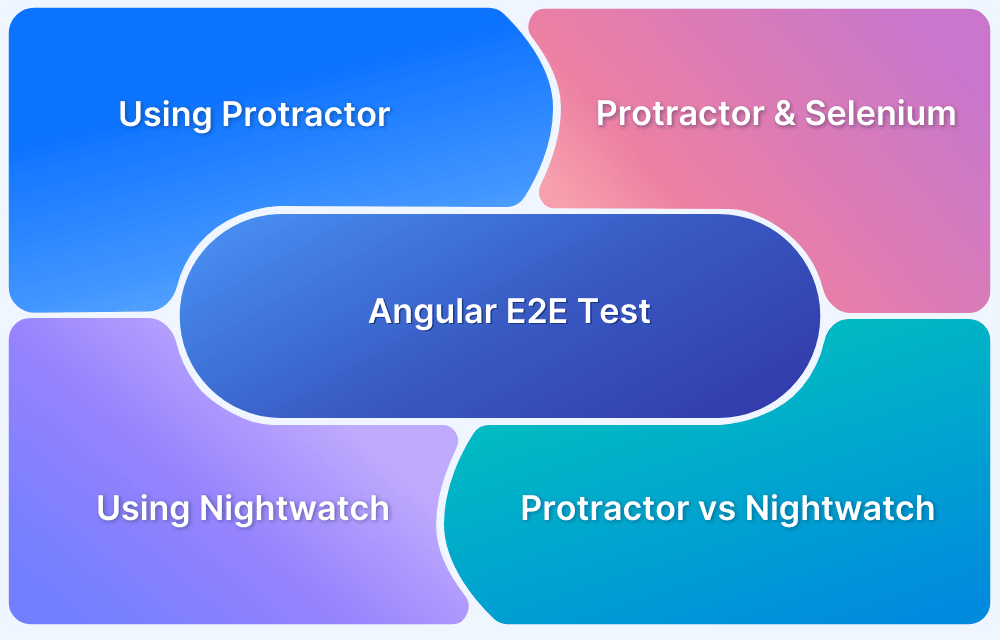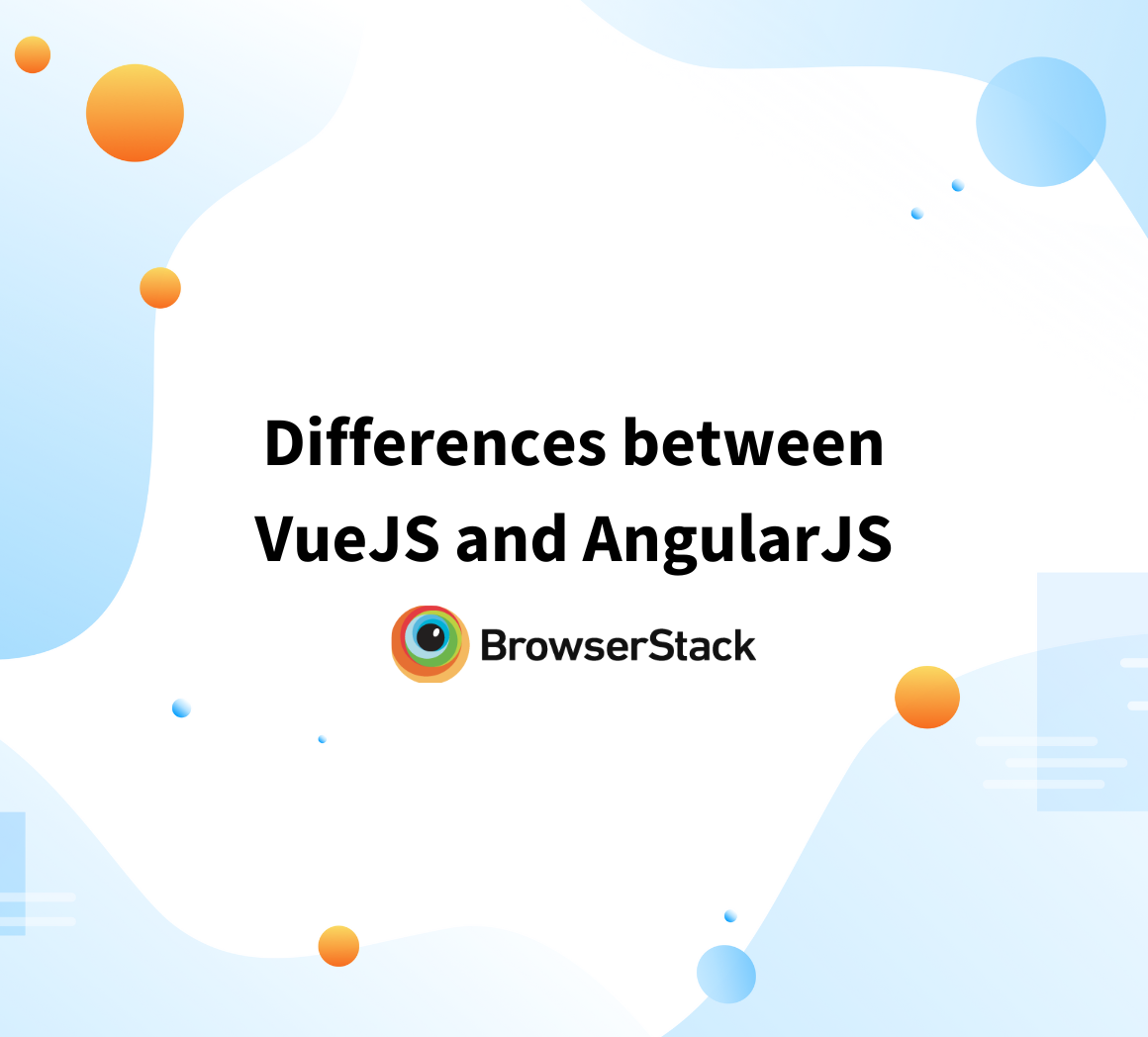The difference between Angular and AngularJS lies in their architecture, performance, and use cases. Understanding their differences helps developers choose the right framework for modern web applications.
Overview
AngularJS (released in 2010) is a JavaScript-based framework that follows the MVC architecture and relies on two-way data binding. It is mainly used for building single-page applications (SPAs) but has limitations in performance and scalability.
Angular (released in 2016) is a TypeScript-based framework with a component-driven architecture. It offers better performance, modular development, and improved security, making it ideal for modern web applications.
Differences Between Angular and AngularJS
Here’s a comparison of Angular and AngularJS
- Language: AngularJS uses JavaScript, while Angular is based on both JavaScrip and TypeScript.
- Architecture: AngularJS follows MVC, whereas Angular is component-based.
- Performance: Angular is faster due to improved data binding and optimized rendering.
- Mobile Support: AngularJS lacks a mobile-first design, whereas Angular is optimized for mobile apps.
- Dependency Injection: Angular has built-in dependency injection, unlike AngularJS.
- Testing: Angular provides better support for unit testing with tools like Karma while testing in AngularJS is more complex.
This article explores Angular and AngularJS, covering their features, limitations, and key differences to help you choose the right framework.
What is Angular?
Angular is an open-source frontend framework that helps businesses build single-page applications (SPAs). It uses HTML and Typescript. However, modern browsers do not understand Typescript and therefore the Typescript is translated to JavaScript so that the browsers can easily compile the application written in Typescript. This is also the core difference between Angular and AngularJS, one uses Typescript and JavaScript.
The initial release of Angular in 2016 was supposed to be the second version of the most famous front-end framework AngularJS. However, later it was kept as a separate entity. The latest version (currently) of Angular is Angular 14.
Prominent features of Angular
Listed below are some of the prominent features of Angular.
- Use of Typescript: AngularJS uses JavaScript however, Angular (2 and later versions) uses Typescript during development. Typescript offers static typing, which reduces the runtime errors that AngularJs were causing while producing extensive applications.
- Faster than AngularJS: Angular is at least 7 times faster than AngularJS due to its better architecture, and algorithm for data binding. It does not generate HTML, and wait for the browser to parse it, instead, it creates DOM data structures directly. Also, it offers the feature of lazy loading, where only those components that are rendered are needed, thus making the overall application faster.
- Component-based architecture: Angular uses the components-based architecture, where it uses the components that are directives with the template. Angular has reusable, easy-to-use, and maintainable components, which are also independent.
- CLI comes integrated with Angular: Angular has the command line interface, which helps in accessing testing procedures and maintains the application easily from a command shell.
- Data Binding: AngularJS uses the NG directive approach to perform data binding, where a developer has to remember the exact expression of the NG directive, whereas, in Angular () is used for event binding, and [ ] for property binding.
- Mobile application development: Angular also offers a very trending feature – being able to create mobile apps with the help of Angular.
Limitations of Angular
Apart from all the features Angular offers, there are a few limitations that come alongside.
- Learning Typescript: Although Typescript is a superset of JavaScript, and is helpful while developing Angular applications, learning Typescript is a tedious task, as Typescript is not a widely known programming language.
- Unnecessarily Complex: The Angular application sometimes gets very complex even for building basic applications. Also, Angular 2 was completely different from AngularJS, thus a lot of code from existing systems had to be migrated, which increased the complexity.
- Documentation for Angular is incomplete: One core advantage for several developers is that it is compatible with the command line interface, however, developers do not rely solely on its official documentation, stating that it is incomplete.
What is Angular JS?
AngularJS is the first version released by Google in 2010 as a JavaScript-based front-end framework for developing single-page applications. AngularJS was built upon the Model-View-Controller (MVC) architecture. The Angular team in Google stopped support for AngularJS on 31 December 2021, however, all the applications that were built upon AngularJS continue to work. Although the LTS for AngularJS has officially ended, people still consider the features of AngularJS worthy and use it for building extensive SPAs.
Also Read: Browser Compatibility for AngularJS Web Apps
Prominent features of Angular JS
Some notable features of AngularJS include.
- Use of JavaScript: JavaScript is the most widely known programming language in the world, and is more popular than Typescript. Therefore, there are web developers that are already handy with this language and do not have to carry the weight of learning a new language to develop applications.
- Organized and Structured: AngularJS has a small codebase, which makes it clean and organized, thus facilitating more comfort while developing any application. Also, MVC architecture separated design from logic, making complex applications maintainable.
- Two-way data binding: In AngularJS, you may not have to write a separate piece of code to perform two-way data binding. Any change in the model automatically reflects in the view and vice-versa.
- In-built dependency injection: Dependency injection allows creation of objects outside the class and use them within the class. It allows easy testing.
- Routing: The routing feature of AngularJS is very useful, it allows you to switch between views in your application without having to reload anywhere, thus keeping the single-page application intact.
Limitations of AngularJS
Apart from several advantages, let’s also look at some of the disadvantages of using AngularJS.
- Designer-friendly: AngularJS was built for the sake of designing purposes, therefore, it does not offer a very developer-friendly experience while creating applications. Also, the developer has to be familiar with the MVC architecture to implement the development in AngularJS.
- Not well-suited for scale applications: Using AngularJS for small-scale applications does not throw any exceptions, it only occurs while managing an extensive application built with AngularJS. Thereafter, the code becomes highly complex to manage and understand.
Difference between AngularJs and Angular
Understanding the key differences between Angular and AngularJS is essential for choosing the right framework. Below is a comparison based on architecture, performance, and features.
Category | Angular | AngularJS |
| Creator | ||
| Language supported | JavaScript and Typescript | JavaScript |
| Mobile Development friendly | Compatible for mobile-development | Not compatible |
| Architecture | It uses components and directives | Support model-view-controller (MVC) and model-view-view-model (MVVM) architectures. |
| Testing | Supports unit testing with Karma | Testing is done through third-party applications |
| CLI | Comes with Angular CLI | No support for CLI |
| Dependency Injection | Uses hierarchal dependency injection | Does not use dependency injection. Uses directives |
| Performance | Supports server-side rendering which offers a speedy performance | Overall performance is slow as compared to Angular |
| Example | Gmail and Upwork | Netflix and Lego |
Conclusion
Angular and AngularJS are the two web frameworks that came from the same source, Google, offering developers the ease to create user interfaces in their own unique style respectively. Angular does the task without having to add external dependencies, whereas, with AngularJs you can create a feature-extensive website with only a few lines of code.
To choose the framework, you must be aware of the requirements of the project and your potential as a developer. Thereafter, there becomes no need to compare both frameworks. No matter which framework you choose, it is important to perform tests on real devices and browsers over emulators and simulators for accurate results.
Using BrowserStack Real Device Cloud, you can access 3500+ browser-device combinations offering a wide coverage, allowing you to test end to end under real user conditions.






